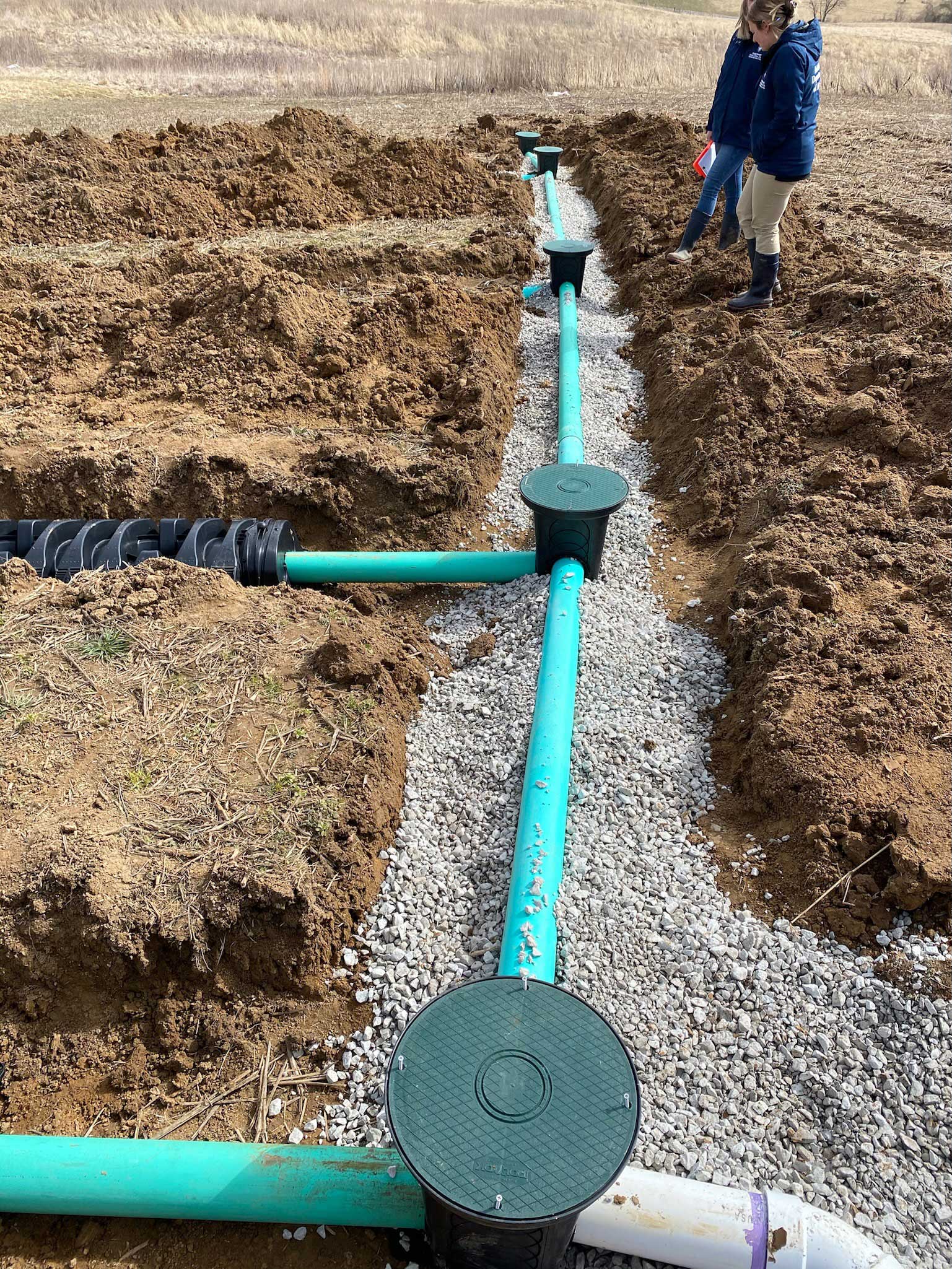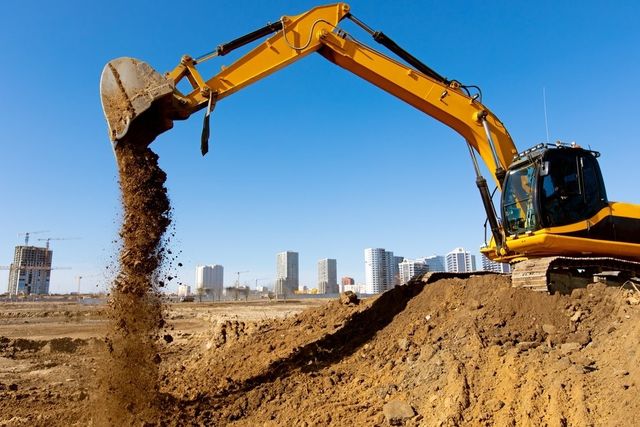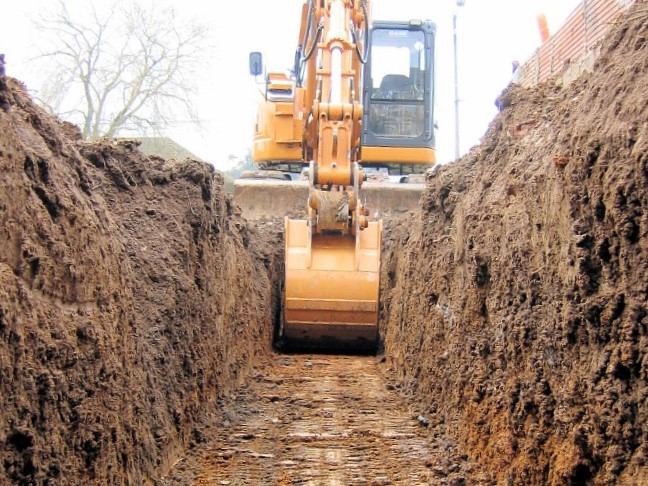Ideal Dump Truck Companies in Ohio - Top-Rated Dump Truck Providers
Ideal Dump Truck Companies in Ohio - Top-Rated Dump Truck Providers
Blog Article
Introducing the Art of Excavation: Pro Tips for Safe and Effective Digging
In the realm of excavation, the mastery of secure and effective excavating is an art form that needs precision, adherence, and knowledge to well-known practices. As soil is turned and planet is moved, the details of excavation disclose themselves, demanding a keen understanding of devices, dirt make-up, safety and security methods, and environmental considerations. The competence needed to browse these components properly can suggest the distinction between an effective excavation task and a possible disaster. By unraveling the layers of this detailed procedure, a globe of understandings and methods awaits those looking for to elevate their excavation abilities to new elevations.
Value of Appropriate Devices
To make sure the security and efficiency of any type of excavation task, utilizing the ideal devices is critical. Excavation tasks vary in range and complexity, varying from tiny residential landscape design tasks to large-scale building tasks.
These flexible machines come in different sizes to fit different task needs. Small excavators are perfect for smaller sized tasks, while bigger excavators deal with extra substantial tasks successfully.
Excavators succeed in tasks that require pushing large quantities of dirt or debris. By spending in the suitable equipment, excavation tasks can be finished securely, on time, and with accuracy.
Recognizing Dirt Structure
An extensive understanding of dirt make-up is fundamental for implementing excavation jobs with accuracy and security. Recognizing the various kinds of dirt is essential as it straight influences excavation approaches, tools selection, and total job effectiveness. Soil structure usually contains four primary elements: sand, silt, clay, and raw material. Each component has unique residential properties that affect exactly how soil responds to excavation processes.
Sand fragments are the biggest and supply good water drainage however supply little communication. Silt bits are smaller than sand however larger than clay, providing modest water drainage and communication. Clay particles are the smallest and supply high communication however inadequate water drainage. Organic matter, such as rotting plant material, affects soil fertility and security.
Before commencing excavation, carrying out dirt examinations to identify its make-up and attributes is essential. This details assists in choosing the suitable equipment, carrying out precaution, and developing excavation techniques tailored to the certain soil problems - lancaster trenching. By understanding soil make-up, excavation experts can enhance job end results while ensuring safety and adherence to finest practices
Precaution and Procedures
Recognizing soil make-up is the foundation whereupon security measures and methods for excavation projects are built, making sure the wellness of workers and the success of the undertaking. When it comes to safety during excavation, there are a number of essential measures that have to be carried out to reduce risks and stop accidents.
Firstly, before any type of excavating commences, a complete inspection of the site should be performed to determine any possible hazards such as underground energies, unsteady soil conditions, or nearby structures that might position a danger. It is vital to have a proficient individual supervise the excavation procedure to ensure that all safety and security procedures are complied with strictly.
Furthermore, all employees included in the excavation must be correctly trained in secure redirected here excavating practices and the proper operation of tools. By adhering to these safety measures and protocols, excavation projects can be finished effectively and without occurrence.
Efficient Excavation Planning
When starting an excavation task, meticulous preparation is vital to make sure efficiency, security, and successful results. Efficient excavation planning involves numerous vital actions that are vital for the smooth execution of the task. The first step is to carry out an extensive site analysis to recognize any kind of prospective risks, such as below ground energies or unsteady soil conditions. This information is crucial for developing a detailed excavation strategy that consists of safety and security procedures and run the risk of mitigation strategies.
Once the website analysis is full, the following action is to develop a clear timeline and routine for the excavation activities. This includes establishing the sequence of jobs, equipment demands, and workforce allowance. Correct organizing aids avoid delays and makes sure that the project site here remains on track.

Moreover, interaction amongst all team participants is paramount during the planning phase. Clear regulations, regular updates, and efficient sychronisation are vital for a successful excavation job. By investing time and initiative in meticulous planning, excavation teams can significantly enhance productivity, reduce dangers, and accomplish successful results.

Managing Ecological Considerations
With enhancing focus on ecological sustainability in building methods, handling environmental factors to consider has come to be an important element of excavation tasks. Excavation activities have the potential to affect the surrounding atmosphere through dirt erosion, sediment runoff, habitat disturbance, and contamination of water sources. To mitigate these dangers, it is necessary to apply best techniques that prioritize environmental security.

In addition, correct waste monitoring is crucial to stop dirt and water contamination. Implementing treatments for the disposal of harmful materials, recycling of waste products, and lessening making use of dangerous chemicals can substantially reduce the ecological influence of excavation projects. By integrating these techniques right into excavation preparation and execution, building firms can guarantee that their jobs are not just secure and productive however additionally ecologically accountable.
Final Thought
In verdict, mastering the art of excavation requires a detailed understanding of correct devices, dirt make-up, precaution, and efficient planning. By complying with these standards and thinking about ecological elements, excavations can be conducted safely and effectively. It is essential to prioritize security and productivity in every digging job to make sure effective results.
As dirt is turned and earth is relocated, the complexities of excavation expose themselves, demanding an eager understanding of equipment, dirt make-up, safety and security methods, and environmental considerations.To make sure the safety and performance of any kind of excavation additional resources project, utilizing the suitable tools is paramount.An extensive grasp of soil composition is fundamental for performing excavation projects with accuracy and security. Recognizing the various types of dirt is critical as it straight affects excavation techniques, devices selection, and general task efficiency. By recognizing soil make-up, excavation professionals can improve task end results while ensuring security and adherence to ideal techniques.
Report this page